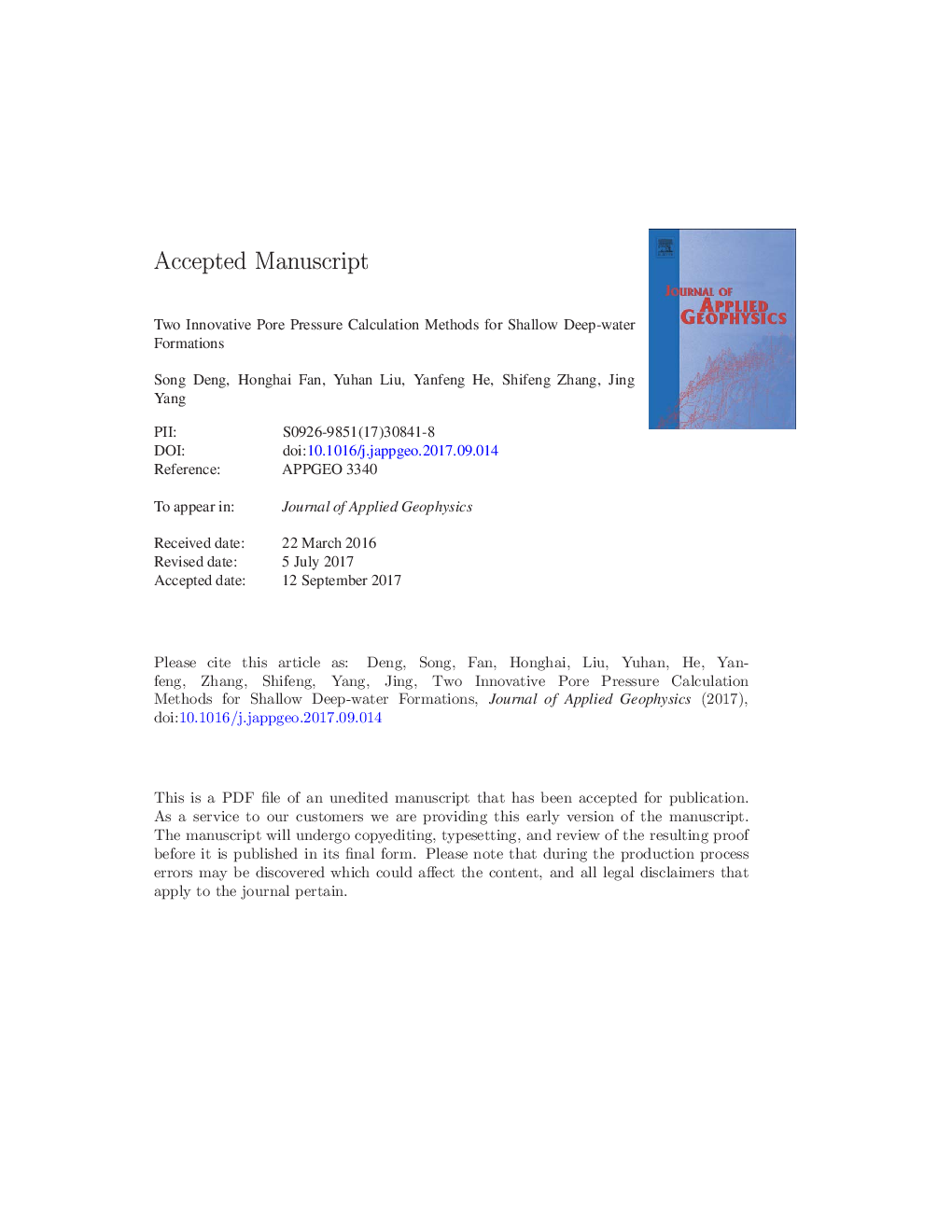| Article ID | Journal | Published Year | Pages | File Type |
|---|---|---|---|---|
| 5787058 | Journal of Applied Geophysics | 2017 | 16 Pages |
Abstract
There are many geological hazards in shallow formations associated with oil and gas exploration and development in deep-water settings. Abnormal pore pressure can lead to water flow and gas and gas hydrate accumulations, which may affect drilling safety. Therefore, it is of great importance to accurately predict pore pressure in shallow deep-water formations. Experience over previous decades has shown, however, that there are not appropriate pressure calculation methods for these shallow formations. Pore pressure change is reflected closely in log data, particularly for mudstone formations. In this paper, pore pressure calculations for shallow formations are highlighted, and two concrete methods using log data are presented. The first method is modified from an E. Philips test in which a linear-exponential overburden pressure model is used. The second method is a new pore pressure method based on P-wave velocity that accounts for the effect of shallow gas and shallow water flow. Afterwards, the two methods are validated using case studies from two wells in the Yingqiong basin. Calculated results are compared with those obtained by the Eaton method, which demonstrates that the multi-regression method is more suitable for quick prediction of geological hazards in shallow layers.
Keywords
Related Topics
Physical Sciences and Engineering
Earth and Planetary Sciences
Geophysics
Authors
Song Deng, Honghai Fan, Yuhan Liu, Yanfeng He, Shifeng Zhang, Jing Yang, Lipei Fu,
